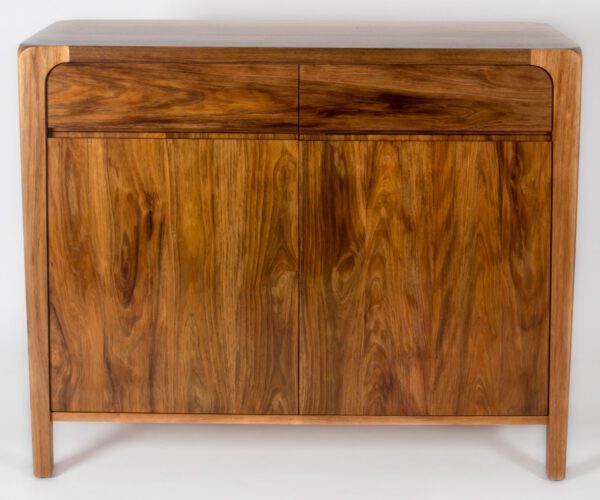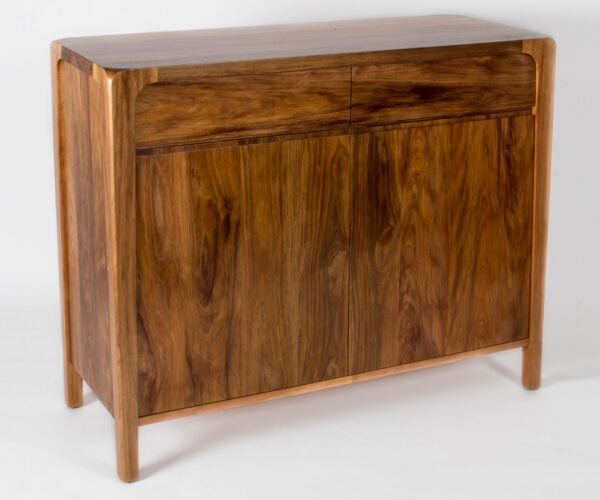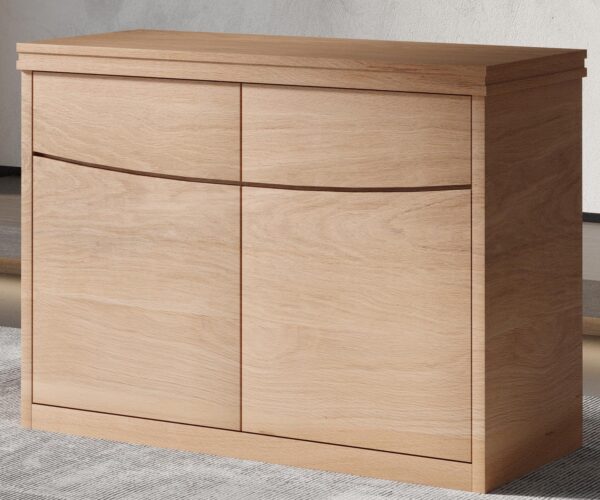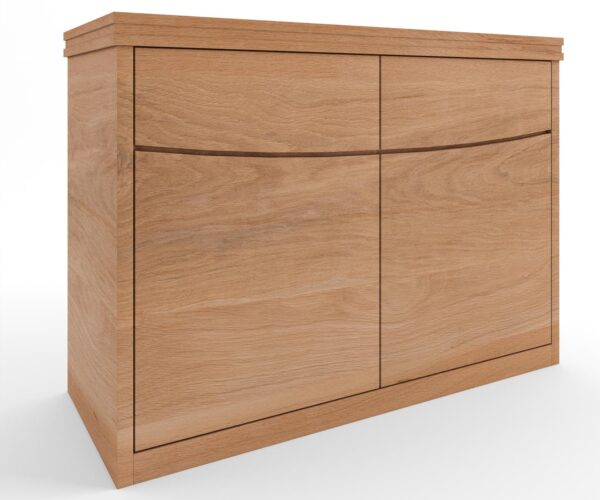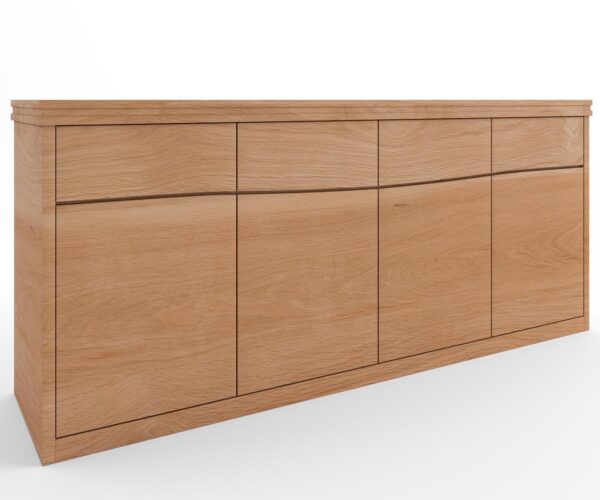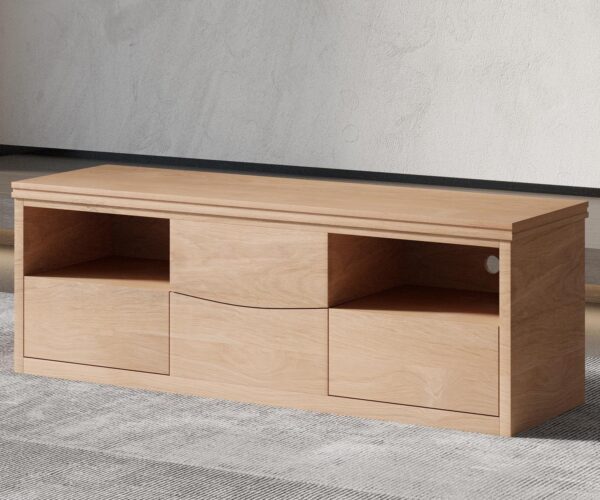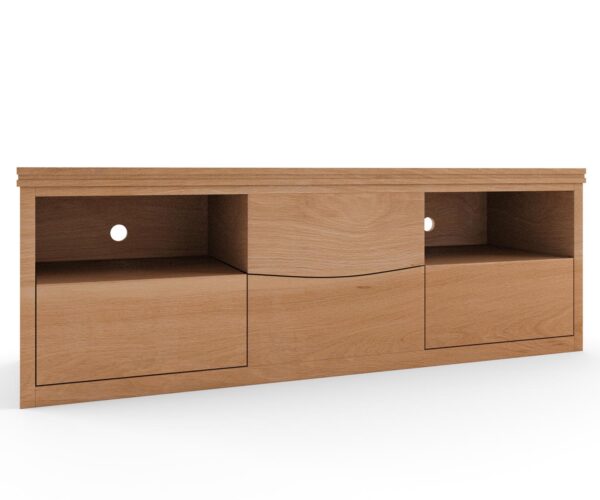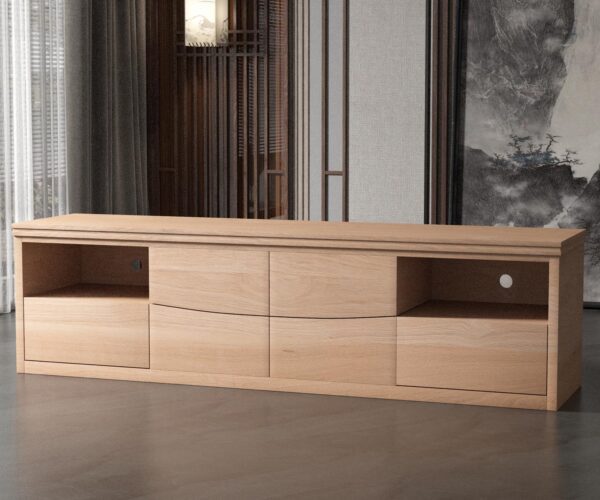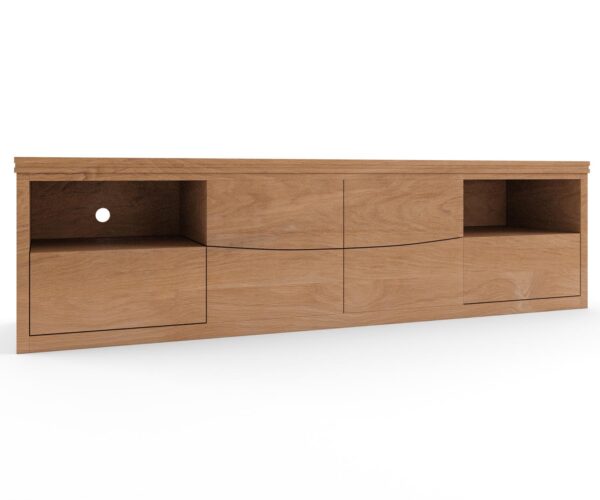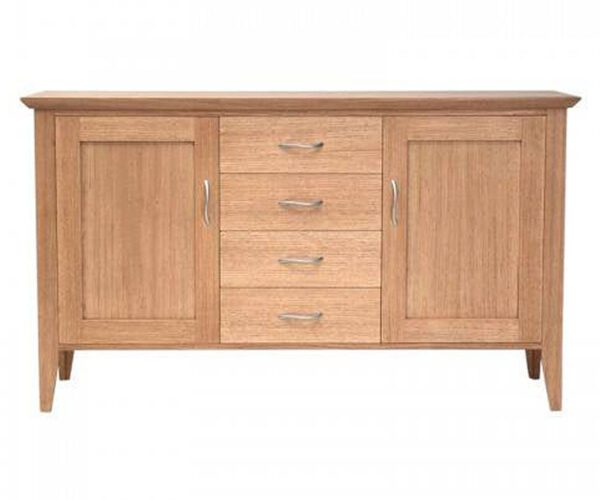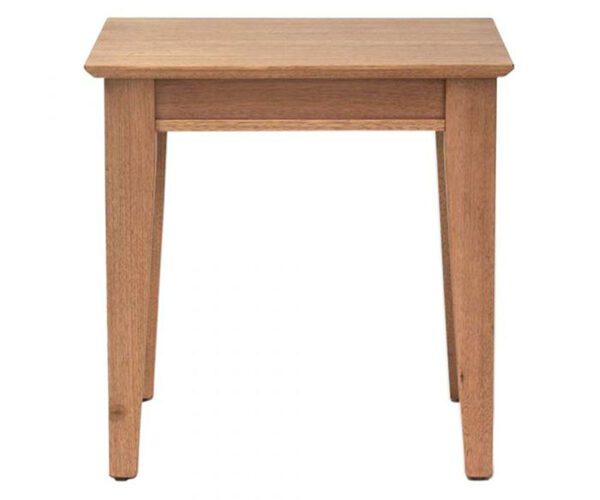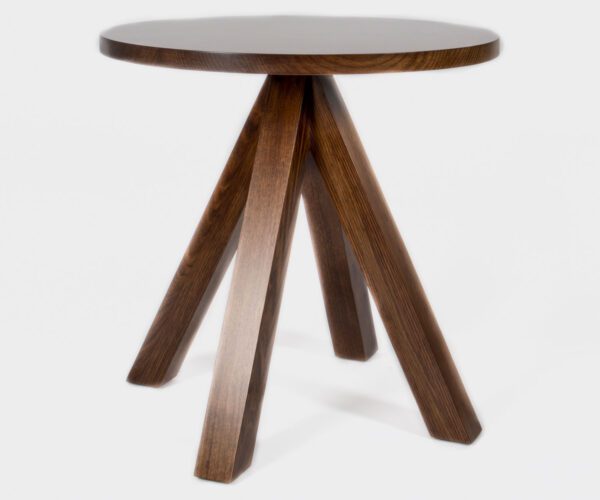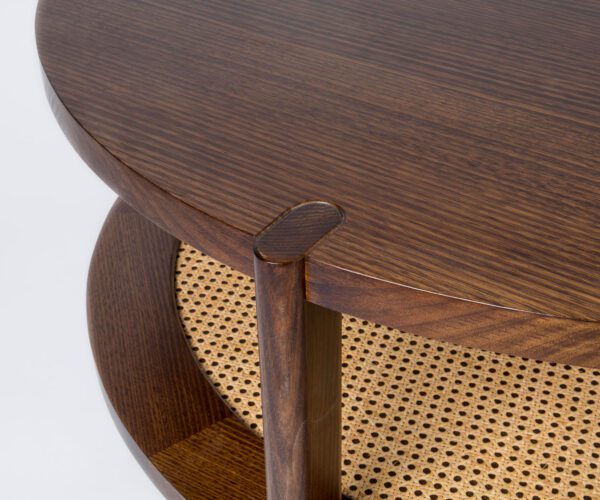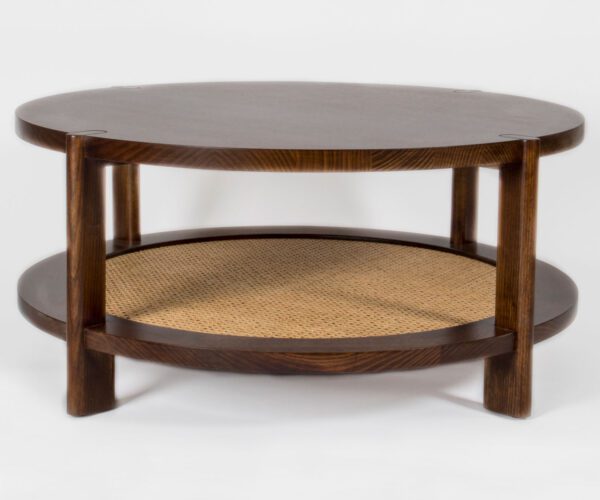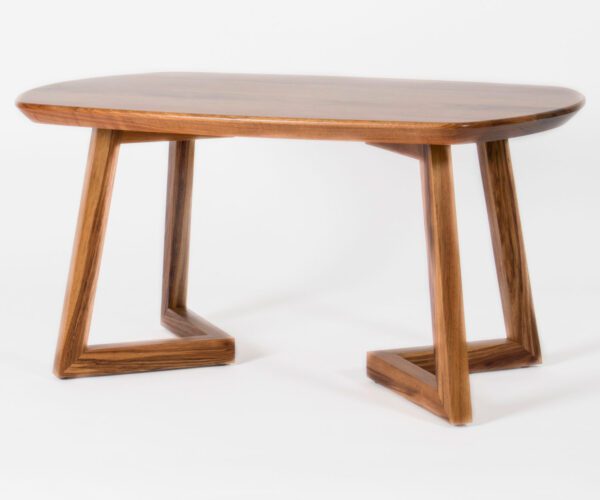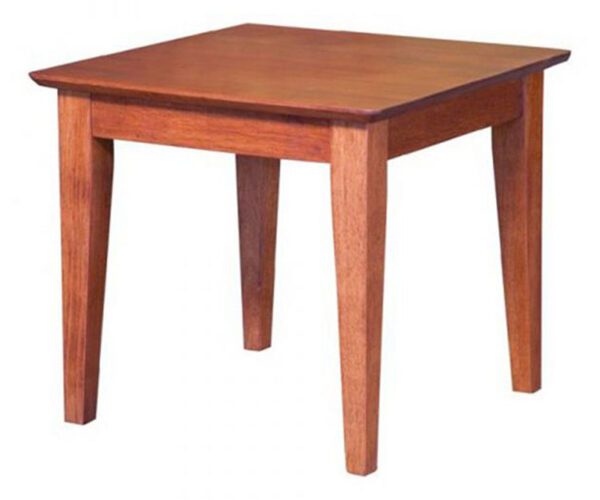Designing for Dignity: How Furniture Design Can Improve Incontinence Management

Incontinence is a common aspect of aging and healthcare. According to a report by the Continence Foundation of Australia, ‘38% of Australians report they have experienced incontinence’1 at some point in their lives. Moreover, it’s noteworthy that ‘74% of people currently living with incontinence are women’2. These numbers underscore the significant impact of incontinence on individuals and the importance of effective management strategies.
As aged care facility managers will know, addressing the needs of residents impacted by incontinence is a crucial aspect of providing quality care. It’s not just about managing the condition itself but also about preserving the dignity and comfort of those affected. This is where thoughtful furniture design can play a pivotal role.
The release of the new “Survey of persons impacted by incontinence” by the Australian Government Department of Health and Aged Care highlights the growing recognition of the importance of understanding and addressing the needs of individuals living with incontinence. This survey, targeted at people impacted by incontinence, aims to inform an independent evaluation of government-funded continence initiatives.
So, how can aged care furniture design contribute to improving incontinence management in aged care facilities?
Comfort and Support: Ensuring Optimal Well-being
One of the primary considerations in designing furniture for incontinence management is comfort. Chairs, sofas, and beds should provide adequate support to prevent discomfort or pressure sores, especially for residents who may spend extended periods seated or lying down.
- Pressure Relief: Individuals living with incontinence may spend extended periods seated or lying down, making them susceptible to pressure ulcers and discomfort. Therefore, furniture should be designed to distribute weight evenly and alleviate pressure points, particularly in areas prone to pressure injuries, such as the sacrum, buttocks, and heels. Features such as memory foam cushions, gel-infused padding, and adjustable reclining positions can help minimize pressure and enhance comfort.
- Postural Support: Maintaining proper posture is essential for preventing musculoskeletal issues and promoting overall comfort. Furniture should offer adequate lumbar support and cushioning to support the natural curvature of the spine. Additionally, chairs and sofas with adjustable backrests and armrests allow residents to find ergonomic positions that suit their individual needs, reducing strain and discomfort.
- Mobility Assistance: For residents with mobility limitations, getting in and out of furniture can be challenging and sometimes painful. Furniture design should incorporate features that facilitate ease of movement, such as sturdy armrests at a suitable height for leverage and firm, stable bases for support. Lift chairs with powered lifting mechanisms provide additional assistance, allowing residents to transition from sitting to standing with minimal effort and strain.
- Temperature Regulation: Maintaining a comfortable body temperature is essential for residents’ overall well-being. Furniture materials should be breathable and temperature-regulating to prevent overheating or excessive perspiration, which can exacerbate skin irritation and discomfort. Upholstery fabrics such as cotton, linen, and moisture-wicking synthetics help promote airflow and moisture management, enhancing overall comfort.
- Customization and Personalization: Recognizing that individuals have unique preferences and requirements, offering custom furniture options can cater to diverse needs. Adjustable features such as seat height, depth, and angle enable residents to tailor their seating experience to their comfort preferences. Additionally, providing a variety of seating options, including chairs, recliners, and sofas, allows residents to choose the furniture that best suits their comfort and mobility needs.
Accessibility and Ease of Use
Furniture should be designed with accessibility in mind, making it easier for residents with mobility issues to navigate their environment independently. Features such as adjustable heights, sturdy armrests, and easy-to-operate mechanisms can significantly enhance usability.
- Adjustable Features: Incorporating adjustable features into furniture design can greatly enhance accessibility for residents with varying mobility levels. For example, chairs and beds with adjustable heights allow individuals to transition more easily from sitting to standing or lying down. This feature is particularly beneficial for residents who may have difficulty with mobility or require assistance from caregivers.
- Sturdy Support Structures: Furniture should be designed with sturdy support structures to ensure stability and safety for residents as they move in and out of seating or lying positions. Armrests and grab bars can provide additional support, helping residents maintain balance and stability.
- Easy-to-Operate Mechanisms: Simplifying the operation of furniture mechanisms is essential for residents to use them independently whenever possible. Whether it’s adjusting the recline of a chair or raising/lowering the height of a bed, mechanisms should be intuitive and easy for residents to operate without assistance.
- Clear Signage and Instructions: Clear signage and instructions can assist residents in understanding how to use furniture properly. This can include labeling controls with simple, easy-to-understand symbols or providing written instructions in multiple languages to accommodate residents with diverse linguistic backgrounds.
- Accessible Design Standards: Adhering to accessible design standards ensures that furniture is designed with the needs of all residents in mind, including those with disabilities or mobility impairments. This may involve considerations such as minimum clearances around furniture, appropriate heights and widths for seating, and incorporating features like armrests and footrests for added support.
- User-Centered Design: Involving residents in the design process can provide valuable insights into their specific needs and preferences. Conducting surveys, focus groups, or individual interviews can help identify potential barriers to accessibility and inform design decisions that prioritize resident comfort and usability.
- Ongoing Evaluation and Feedback: Regular evaluation and feedback from residents and caregivers are essential for identifying areas where improvements can be made to enhance accessibility and ease of use. This feedback loop allows facilities to make informed adjustments to furniture design based on real-world usage and experiences.
Hygiene and Cleanliness: Ensuring a Safe and Sanitary Environment
Maintaining a clean and hygienic environment is paramount in any healthcare setting, and it becomes even more critical when managing incontinence. Furniture in aged care facilities must be designed with hygiene in mind to prevent the spread of infections, minimize odors, and promote the overall well-being of residents.
- Material Selection: Choosing the right materials is fundamental to ensuring furniture can withstand the challenges posed by incontinence. Opting for non-porous, moisture-resistant upholstery fabrics such as Crypton (engineered with a patented moisture barrier), vinyl, polyurethane, or certain types of leather can help prevent absorption of fluids and make cleaning easier. These materials also offer durability and longevity, reducing the need for frequent replacements.
- Removable and Washable Covers: Removable, washable covers are a practical solution for maintaining cleanliness and hygiene in aged care facilities. Furniture items such as chairs, sofas, and mattresses should be equipped with covers that can be easily removed and laundered. This allows for quick cleanup in the event of accidents and ensures that surfaces remain sanitary for subsequent use.
- Seamless Design: Furniture should be designed with minimal seams, crevices, or intricate details that can trap moisture, dirt, or bacteria. Smooth, seamless surfaces are easier to clean and disinfect thoroughly, reducing the risk of microbial contamination and promoting a hygienic environment.
- Antimicrobial Treatments: Incorporating antimicrobial treatments into furniture materials can provide an additional layer of protection against bacteria, fungi, and other pathogens. These treatments inhibit the growth of microorganisms on surfaces, helping to maintain cleanliness and mitigate the risk of cross-contamination.
- Cleaning Protocols: Establishing regular cleaning protocols is essential for upholding hygiene standards in aged care facilities. Staff should be trained on proper cleaning techniques and provided with appropriate disinfectants and cleaning agents suitable for use on furniture surfaces. High-touch areas should be cleaned and sanitized frequently to prevent the spread of germs.
- Odor Control: Incontinence-related odors can be a significant concern in aged care settings. Furniture design should take into account measures for odor control, such as the use of odor-absorbing materials or the incorporation of air circulation systems that help dissipate unpleasant smells. Additionally, proactive management of incontinence through timely changes and proper disposal of absorbent products can help minimize odors.
Privacy and Dignity: Upholding Resident Well-being
Maintaining the privacy and dignity of residents is paramount in any healthcare setting, particularly when it comes to managing conditions like incontinence. Here’s how furniture design can contribute to upholding these fundamental principles:
- Discreet Access to Facilities: Privacy begins with providing residents with discreet access to facilities for managing their incontinence needs. Furniture arrangements should allow for easy and unobtrusive access to bathrooms, changing rooms, or designated areas for personal care. This ensures that residents can attend to their needs without feeling exposed or uncomfortable.
- Thoughtful Space Planning: The layout of furniture within communal areas and private rooms should be thoughtfully planned to afford residents a sense of personal space and privacy. For example, seating areas can be arranged to provide ample distance between individuals, minimizing the risk of accidental exposure and fostering a sense of privacy during social interactions.
- Privacy Screens and Curtains: In areas where privacy is especially crucial, such as during personal care routines or medical examinations, the use of privacy screens or curtains can provide residents with additional privacy and dignity. These adjustable barriers can be deployed as needed to create private enclosures within shared spaces, allowing residents to maintain their modesty and comfort.
- Discreet Storage Solutions: Storage solutions for incontinence products and supplies should be designed to be discreet yet easily accessible. Cabinets, drawers, or dedicated storage compartments can be incorporated into furniture pieces such as bedside tables or wardrobes, allowing residents to maintain their dignity by keeping personal items out of sight while ensuring they are readily available when needed.
- Comfortable and Supportive Seating: Comfort is essential for promoting dignity, especially for residents who may experience discomfort or pain associated with incontinence. Seating options should prioritize comfort and support, with features such as padded cushions, ergonomic designs, and adjustable settings to accommodate individual preferences and needs.
- Respectful Communication and Support: Beyond furniture design, fostering a culture of respect and empathy among staff is crucial for upholding residents’ dignity. Caregivers should be trained to communicate respectfully and sensitively with residents regarding their incontinence needs, ensuring that their preferences and privacy concerns are always respected.
Innovation and Adaptability
Embracing innovation in furniture design opens up a world of possibilities for improving incontinence management in aged care facilities. By integrating cutting-edge technology and adaptable features, furniture can become more than just functional pieces; they can become powerful tools in enhancing the quality of care provided to residents.
- Smart Furniture Solutions: Technology-enabled furniture, such as sensor-equipped chairs and beds, can revolutionize the way incontinence is managed. These innovative solutions can detect changes in moisture levels and alert caregivers in real-time, allowing for prompt assistance and intervention. For example, smart mattresses can monitor movements and provide valuable insights into residents’ sleep patterns, helping identify potential issues like nocturia or restless sleep associated with incontinence.
- Adaptive Seating: Incontinence can affect individuals differently, and their needs may change over time. Adaptive seating solutions, such as modular chairs with adjustable seat heights and reclining features, can accommodate varying levels of mobility and comfort preferences. These versatile designs allow residents to find the most suitable seating position for their needs, promoting independence and dignity.
- Antimicrobial Materials: In the fight against infection and cross-contamination, furniture materials with antimicrobial properties offer an innovative solution. Incorporating antimicrobial fabrics and surfaces into furniture design can help inhibit the growth of bacteria and viruses, reducing the risk of infections and promoting a healthier environment for residents.
- Customizable Configurations: Every aged care facility has its unique layout and spatial constraints. Customizable furniture configurations enable facility managers to optimize space utilization and create tailored solutions that meet the specific needs of residents. Whether it’s modular seating arrangements or convertible bed designs, flexibility in furniture layout allows for seamless integration with existing infrastructure and workflows.
- Ergonomic Design Principles: Ergonomics plays a crucial role in ensuring the comfort and well-being of residents impacted by incontinence. Furniture designed with ergonomic principles in mind, such as proper lumbar support and pressure-relieving cushioning, can alleviate discomfort and minimize the risk of musculoskeletal issues. By prioritizing ergonomic design features, aged care facilities can create environments that promote both physical comfort and overall health.
- Environmental Sustainability: In addition to functionality and performance, sustainability is becoming increasingly important in furniture design. Choosing environmentally friendly materials and manufacturing processes not only reduces the carbon footprint but also contributes to a healthier indoor environment for residents. From recycled materials to energy-efficient production methods, sustainable furniture options align with the broader goals of promoting health and well-being in aged care settings.
Embracing innovative furniture designs can open up new possibilities for enhancing incontinence management. From recliners with built-in lifting mechanisms to sensor-equipped mattresses that alert staff to changes in moisture levels, technology can play a significant role in improving the quality of care provided.
By prioritizing these principles in furniture design, aged care facilities can create environments that not only support effective incontinence management but also promote the dignity, comfort, and well-being of residents. As the landscape of aged care continues to evolve, it’s essential to stay proactive in exploring and implementing innovative solutions that empower both residents and caregivers.
In conclusion, the release of the new survey underscores the importance of understanding and addressing the needs of individuals impacted by incontinence. By leveraging thoughtful furniture design, aged care facilities can make significant strides in improving the management of this common yet challenging aspect of healthcare, ultimately enhancing the quality of life for residents.
1 Continence Foundation of Australia, Continence in Australia: A Snapshot (June 2019), 2
2 Continence Foundation of Australia, Continence in Australia: A Snapshot (June 2019), 6
Australian Made Armchairs: Designed for Longevity in Aged Care Settings
More News
Designing for Dignity: How Furniture Design Can Improve Incontinence Management

Incontinence is a common aspect of aging and healthcare. According to a report by the Continence Foundation of Australia, ‘38% of Australians report they have experienced incontinence’1 at some point in their lives. Moreover, it’s noteworthy that ‘74% of people currently living with incontinence are women’2. These numbers underscore the significant impact of incontinence on individuals and the importance of effective management strategies.
As aged care facility managers will know, addressing the needs of residents impacted by incontinence is a crucial aspect of providing quality care. It’s not just about managing the condition itself but also about preserving the dignity and comfort of those affected. This is where thoughtful furniture design can play a pivotal role.
The release of the new “Survey of persons impacted by incontinence” by the Australian Government Department of Health and Aged Care highlights the growing recognition of the importance of understanding and addressing the needs of individuals living with incontinence. This survey, targeted at people impacted by incontinence, aims to inform an independent evaluation of government-funded continence initiatives.
So, how can aged care furniture design contribute to improving incontinence management in aged care facilities?
Comfort and Support: Ensuring Optimal Well-being
One of the primary considerations in designing furniture for incontinence management is comfort. Chairs, sofas, and beds should provide adequate support to prevent discomfort or pressure sores, especially for residents who may spend extended periods seated or lying down.
- Pressure Relief: Individuals living with incontinence may spend extended periods seated or lying down, making them susceptible to pressure ulcers and discomfort. Therefore, furniture should be designed to distribute weight evenly and alleviate pressure points, particularly in areas prone to pressure injuries, such as the sacrum, buttocks, and heels. Features such as memory foam cushions, gel-infused padding, and adjustable reclining positions can help minimize pressure and enhance comfort.
- Postural Support: Maintaining proper posture is essential for preventing musculoskeletal issues and promoting overall comfort. Furniture should offer adequate lumbar support and cushioning to support the natural curvature of the spine. Additionally, chairs and sofas with adjustable backrests and armrests allow residents to find ergonomic positions that suit their individual needs, reducing strain and discomfort.
- Mobility Assistance: For residents with mobility limitations, getting in and out of furniture can be challenging and sometimes painful. Furniture design should incorporate features that facilitate ease of movement, such as sturdy armrests at a suitable height for leverage and firm, stable bases for support. Lift chairs with powered lifting mechanisms provide additional assistance, allowing residents to transition from sitting to standing with minimal effort and strain.
- Temperature Regulation: Maintaining a comfortable body temperature is essential for residents’ overall well-being. Furniture materials should be breathable and temperature-regulating to prevent overheating or excessive perspiration, which can exacerbate skin irritation and discomfort. Upholstery fabrics such as cotton, linen, and moisture-wicking synthetics help promote airflow and moisture management, enhancing overall comfort.
- Customization and Personalization: Recognizing that individuals have unique preferences and requirements, offering custom furniture options can cater to diverse needs. Adjustable features such as seat height, depth, and angle enable residents to tailor their seating experience to their comfort preferences. Additionally, providing a variety of seating options, including chairs, recliners, and sofas, allows residents to choose the furniture that best suits their comfort and mobility needs.
Accessibility and Ease of Use
Furniture should be designed with accessibility in mind, making it easier for residents with mobility issues to navigate their environment independently. Features such as adjustable heights, sturdy armrests, and easy-to-operate mechanisms can significantly enhance usability.
- Adjustable Features: Incorporating adjustable features into furniture design can greatly enhance accessibility for residents with varying mobility levels. For example, chairs and beds with adjustable heights allow individuals to transition more easily from sitting to standing or lying down. This feature is particularly beneficial for residents who may have difficulty with mobility or require assistance from caregivers.
- Sturdy Support Structures: Furniture should be designed with sturdy support structures to ensure stability and safety for residents as they move in and out of seating or lying positions. Armrests and grab bars can provide additional support, helping residents maintain balance and stability.
- Easy-to-Operate Mechanisms: Simplifying the operation of furniture mechanisms is essential for residents to use them independently whenever possible. Whether it’s adjusting the recline of a chair or raising/lowering the height of a bed, mechanisms should be intuitive and easy for residents to operate without assistance.
- Clear Signage and Instructions: Clear signage and instructions can assist residents in understanding how to use furniture properly. This can include labeling controls with simple, easy-to-understand symbols or providing written instructions in multiple languages to accommodate residents with diverse linguistic backgrounds.
- Accessible Design Standards: Adhering to accessible design standards ensures that furniture is designed with the needs of all residents in mind, including those with disabilities or mobility impairments. This may involve considerations such as minimum clearances around furniture, appropriate heights and widths for seating, and incorporating features like armrests and footrests for added support.
- User-Centered Design: Involving residents in the design process can provide valuable insights into their specific needs and preferences. Conducting surveys, focus groups, or individual interviews can help identify potential barriers to accessibility and inform design decisions that prioritize resident comfort and usability.
- Ongoing Evaluation and Feedback: Regular evaluation and feedback from residents and caregivers are essential for identifying areas where improvements can be made to enhance accessibility and ease of use. This feedback loop allows facilities to make informed adjustments to furniture design based on real-world usage and experiences.
Hygiene and Cleanliness: Ensuring a Safe and Sanitary Environment
Maintaining a clean and hygienic environment is paramount in any healthcare setting, and it becomes even more critical when managing incontinence. Furniture in aged care facilities must be designed with hygiene in mind to prevent the spread of infections, minimize odors, and promote the overall well-being of residents.
- Material Selection: Choosing the right materials is fundamental to ensuring furniture can withstand the challenges posed by incontinence. Opting for non-porous, moisture-resistant upholstery fabrics such as Crypton (engineered with a patented moisture barrier), vinyl, polyurethane, or certain types of leather can help prevent absorption of fluids and make cleaning easier. These materials also offer durability and longevity, reducing the need for frequent replacements.
- Removable and Washable Covers: Removable, washable covers are a practical solution for maintaining cleanliness and hygiene in aged care facilities. Furniture items such as chairs, sofas, and mattresses should be equipped with covers that can be easily removed and laundered. This allows for quick cleanup in the event of accidents and ensures that surfaces remain sanitary for subsequent use.
- Seamless Design: Furniture should be designed with minimal seams, crevices, or intricate details that can trap moisture, dirt, or bacteria. Smooth, seamless surfaces are easier to clean and disinfect thoroughly, reducing the risk of microbial contamination and promoting a hygienic environment.
- Antimicrobial Treatments: Incorporating antimicrobial treatments into furniture materials can provide an additional layer of protection against bacteria, fungi, and other pathogens. These treatments inhibit the growth of microorganisms on surfaces, helping to maintain cleanliness and mitigate the risk of cross-contamination.
- Cleaning Protocols: Establishing regular cleaning protocols is essential for upholding hygiene standards in aged care facilities. Staff should be trained on proper cleaning techniques and provided with appropriate disinfectants and cleaning agents suitable for use on furniture surfaces. High-touch areas should be cleaned and sanitized frequently to prevent the spread of germs.
- Odor Control: Incontinence-related odors can be a significant concern in aged care settings. Furniture design should take into account measures for odor control, such as the use of odor-absorbing materials or the incorporation of air circulation systems that help dissipate unpleasant smells. Additionally, proactive management of incontinence through timely changes and proper disposal of absorbent products can help minimize odors.
Privacy and Dignity: Upholding Resident Well-being
Maintaining the privacy and dignity of residents is paramount in any healthcare setting, particularly when it comes to managing conditions like incontinence. Here’s how furniture design can contribute to upholding these fundamental principles:
- Discreet Access to Facilities: Privacy begins with providing residents with discreet access to facilities for managing their incontinence needs. Furniture arrangements should allow for easy and unobtrusive access to bathrooms, changing rooms, or designated areas for personal care. This ensures that residents can attend to their needs without feeling exposed or uncomfortable.
- Thoughtful Space Planning: The layout of furniture within communal areas and private rooms should be thoughtfully planned to afford residents a sense of personal space and privacy. For example, seating areas can be arranged to provide ample distance between individuals, minimizing the risk of accidental exposure and fostering a sense of privacy during social interactions.
- Privacy Screens and Curtains: In areas where privacy is especially crucial, such as during personal care routines or medical examinations, the use of privacy screens or curtains can provide residents with additional privacy and dignity. These adjustable barriers can be deployed as needed to create private enclosures within shared spaces, allowing residents to maintain their modesty and comfort.
- Discreet Storage Solutions: Storage solutions for incontinence products and supplies should be designed to be discreet yet easily accessible. Cabinets, drawers, or dedicated storage compartments can be incorporated into furniture pieces such as bedside tables or wardrobes, allowing residents to maintain their dignity by keeping personal items out of sight while ensuring they are readily available when needed.
- Comfortable and Supportive Seating: Comfort is essential for promoting dignity, especially for residents who may experience discomfort or pain associated with incontinence. Seating options should prioritize comfort and support, with features such as padded cushions, ergonomic designs, and adjustable settings to accommodate individual preferences and needs.
- Respectful Communication and Support: Beyond furniture design, fostering a culture of respect and empathy among staff is crucial for upholding residents’ dignity. Caregivers should be trained to communicate respectfully and sensitively with residents regarding their incontinence needs, ensuring that their preferences and privacy concerns are always respected.
Innovation and Adaptability
Embracing innovation in furniture design opens up a world of possibilities for improving incontinence management in aged care facilities. By integrating cutting-edge technology and adaptable features, furniture can become more than just functional pieces; they can become powerful tools in enhancing the quality of care provided to residents.
- Smart Furniture Solutions: Technology-enabled furniture, such as sensor-equipped chairs and beds, can revolutionize the way incontinence is managed. These innovative solutions can detect changes in moisture levels and alert caregivers in real-time, allowing for prompt assistance and intervention. For example, smart mattresses can monitor movements and provide valuable insights into residents’ sleep patterns, helping identify potential issues like nocturia or restless sleep associated with incontinence.
- Adaptive Seating: Incontinence can affect individuals differently, and their needs may change over time. Adaptive seating solutions, such as modular chairs with adjustable seat heights and reclining features, can accommodate varying levels of mobility and comfort preferences. These versatile designs allow residents to find the most suitable seating position for their needs, promoting independence and dignity.
- Antimicrobial Materials: In the fight against infection and cross-contamination, furniture materials with antimicrobial properties offer an innovative solution. Incorporating antimicrobial fabrics and surfaces into furniture design can help inhibit the growth of bacteria and viruses, reducing the risk of infections and promoting a healthier environment for residents.
- Customizable Configurations: Every aged care facility has its unique layout and spatial constraints. Customizable furniture configurations enable facility managers to optimize space utilization and create tailored solutions that meet the specific needs of residents. Whether it’s modular seating arrangements or convertible bed designs, flexibility in furniture layout allows for seamless integration with existing infrastructure and workflows.
- Ergonomic Design Principles: Ergonomics plays a crucial role in ensuring the comfort and well-being of residents impacted by incontinence. Furniture designed with ergonomic principles in mind, such as proper lumbar support and pressure-relieving cushioning, can alleviate discomfort and minimize the risk of musculoskeletal issues. By prioritizing ergonomic design features, aged care facilities can create environments that promote both physical comfort and overall health.
- Environmental Sustainability: In addition to functionality and performance, sustainability is becoming increasingly important in furniture design. Choosing environmentally friendly materials and manufacturing processes not only reduces the carbon footprint but also contributes to a healthier indoor environment for residents. From recycled materials to energy-efficient production methods, sustainable furniture options align with the broader goals of promoting health and well-being in aged care settings.
Embracing innovative furniture designs can open up new possibilities for enhancing incontinence management. From recliners with built-in lifting mechanisms to sensor-equipped mattresses that alert staff to changes in moisture levels, technology can play a significant role in improving the quality of care provided.
By prioritizing these principles in furniture design, aged care facilities can create environments that not only support effective incontinence management but also promote the dignity, comfort, and well-being of residents. As the landscape of aged care continues to evolve, it’s essential to stay proactive in exploring and implementing innovative solutions that empower both residents and caregivers.
In conclusion, the release of the new survey underscores the importance of understanding and addressing the needs of individuals impacted by incontinence. By leveraging thoughtful furniture design, aged care facilities can make significant strides in improving the management of this common yet challenging aspect of healthcare, ultimately enhancing the quality of life for residents.
1 Continence Foundation of Australia, Continence in Australia: A Snapshot (June 2019), 2
2 Continence Foundation of Australia, Continence in Australia: A Snapshot (June 2019), 6
Australian Made Armchairs: Designed for Longevity in Aged Care Settings
Commercial furniture by room
Based in Brisbane, we’re an Australian manufacturer of aged care furniture, retirement living furniture, hospital & healthcare furniture, hotel & accommodation furniture and student accommodation furniture. We also supply a range of commercial office furniture.
Discover the FHG Look Book: Your Source of Inspiration for Quality Australian-Made Commercial Furniture
- Quality Craftsmanship: See why we’ve been a trusted partner for over 25 years.
- Local Excellence: Learn how our Brisbane team ensures the highest standards.
- Inspiration and Ideas: Find innovative furniture solutions for any environment.
Don’t miss the opportunity to transform your commercial space with FHG’s expertly crafted furniture. Download the FHG Look Book today and start your journey towards exceptional design and quality.

